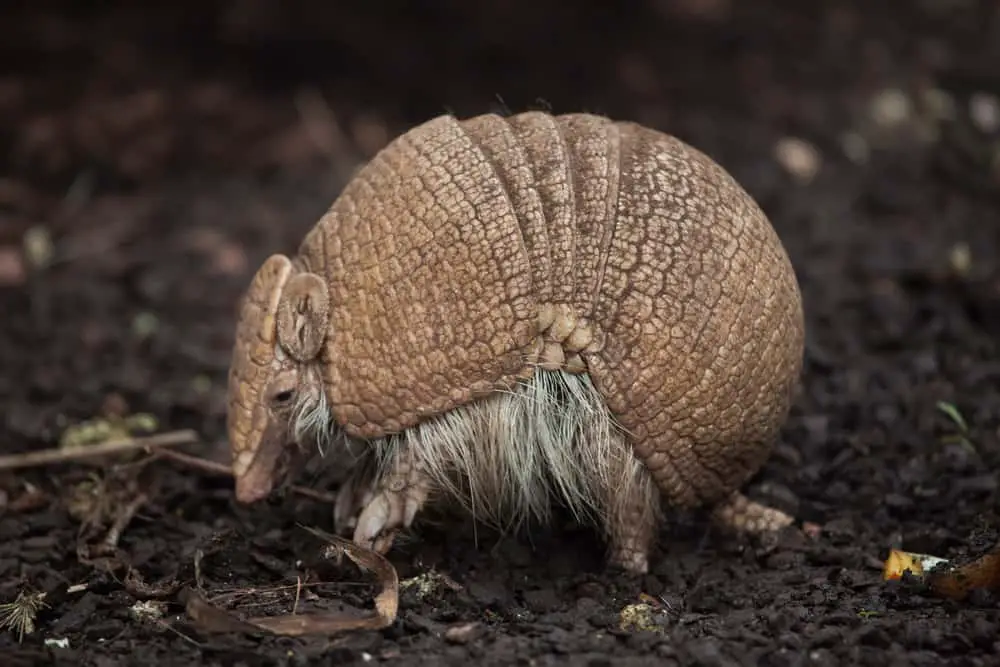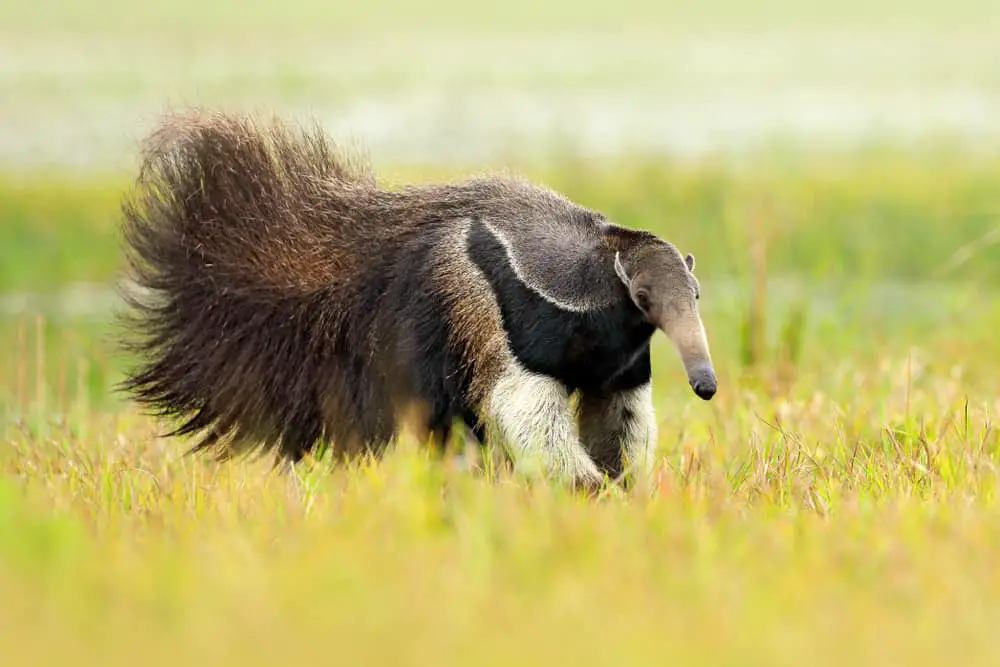
Armadillos, “little armored ones,” are New World placental mammals. They have greyish-brown oval bodies with long, tapering tails; pointy snouts, leathery armor shells.
Most species can be found in South America, although some have expanded northward. The Nine-banded armadillo is the only one that made it to the United States. Some have been found as far north as Missouri.
They live 7 to 10 years in the wild. Giant armadillos have been found to be as large as 59 inches and 119 pounds. Average armadillos are 25 to 48 inches long and weigh 8 to 18 pounds.
They live in warm, moist climates and favor forested areas and grasslands with loose soil. They dig burrows to live in with their sharp claws. They also dig for their food. Some roll up in a tight ball when threatened.
They are solitary creatures, except while breeding or caring for their young.
Table of Contents
- Anteaters
- Sloths
- Pangolins
- Turtles
- Tortoises
- Terrapins
- Indian Rhinoceroses
- Thorny Devils
- Alligators
- Saltwater Crocodiles
- Sea Urchins
- Crabs
- Lobsters
- Crayfish
- Shrimp
Anteaters

Anteaters are mammals. They are members of the suborder Vermilingua, or “worm-tongue.” They live 15 years on average.
They have long noses and long sticky tongues that extend longer than their heads. This makes it easy for them to feed on ants and termites. They have no teeth.
The giant anteater is by far the largest at 5 feet, 11 inches. It weighs up to 90 pounds. Smaller species of anteaters are 14 inches to 3 feet, 11 inches.
They live in South America, but some have extended their range up into Mexico. They are closely related to the sloths and the armadillos but have no armor.
Their habitats are varied, including grasslands, rain forests, and dry tropical forests.
Their body temperature varies between 91 and 97 degrees F. Their daily behavior is mainly an effort to manage their temperature, heating up during foraging, and keeping cool during rest periods.
Anteaters are similar to armadillos in that they share the same backbone structure that permits them to engage in climbing and burrowing. They differ from armadillos in that … Read the rest of the story.
No comments:
Post a Comment